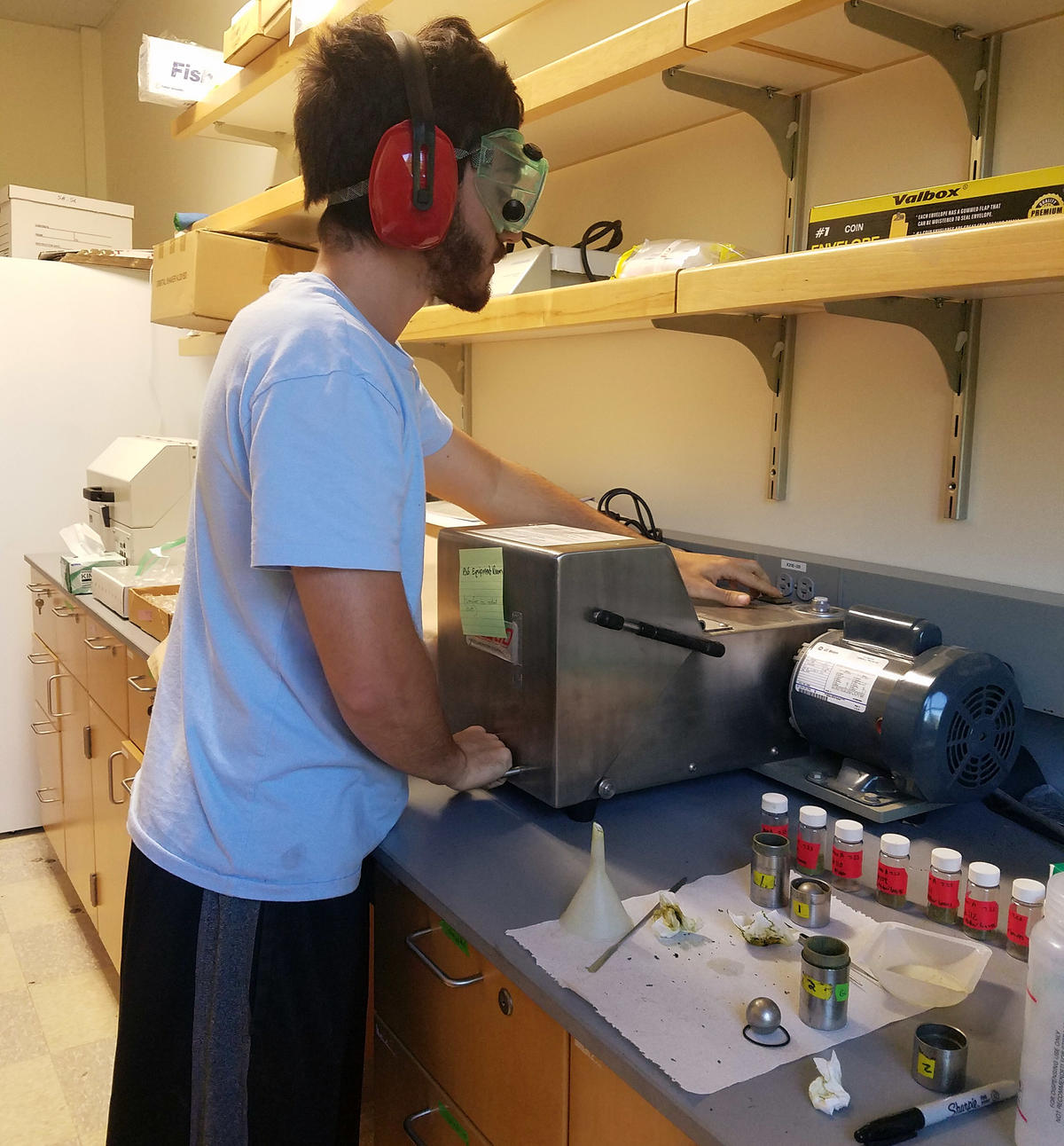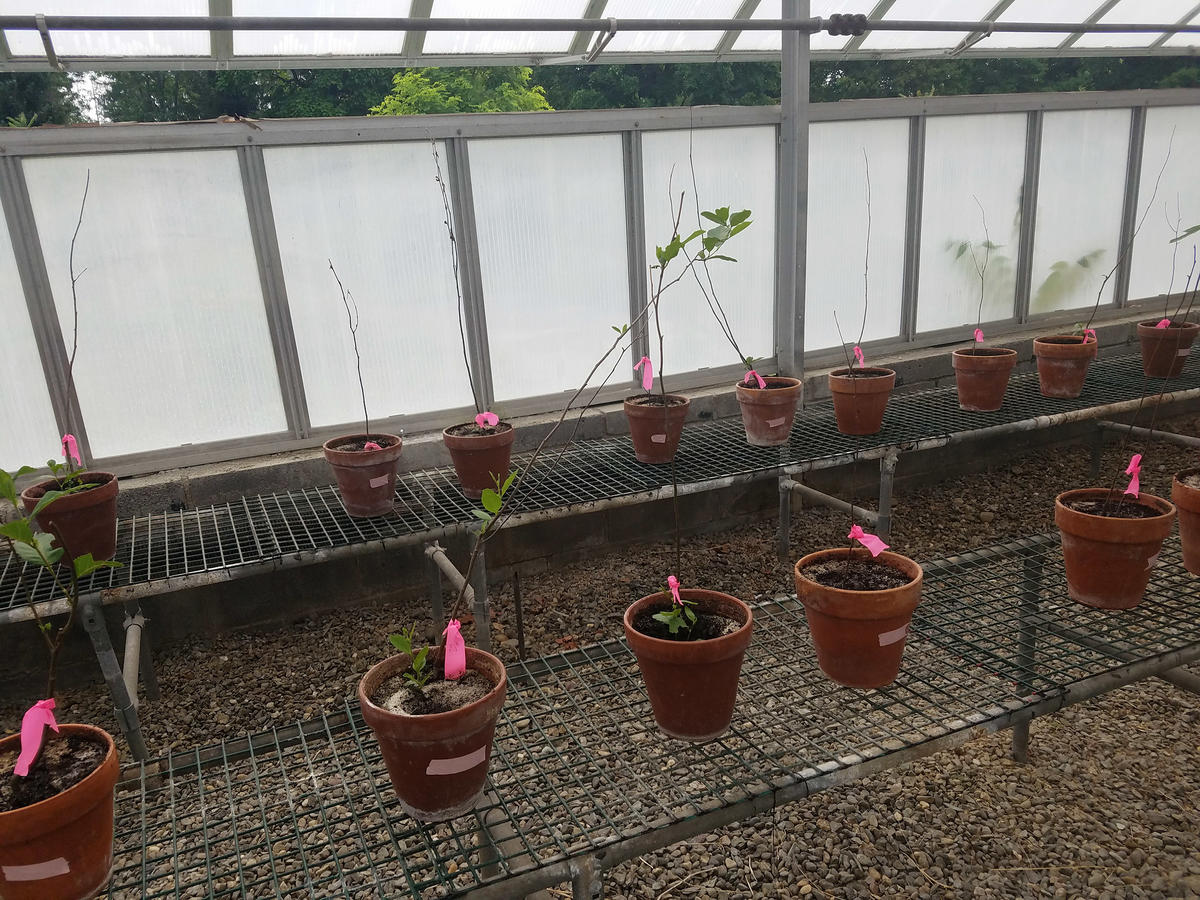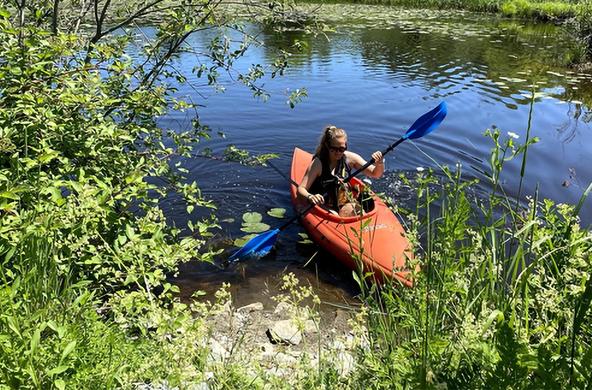Deer and beavers are only a few of the creatures that I've encountered on the Cary Institute hiking trails this summer. On my first day, I saw a beautiful brown fawn by my foot on the edge of the trail. The mother was likely nearby, but I could not see her amid the lush vegetation. The fawn's breathing was steady and it did not seem hurt; upon my return an hour later, it was gone. A few days after, I saw an adult male deer just off the trail. This was around the same place that I’d spotted the fawn. I will always remember that spot as the first time I stood so close to deer.

My first time seeing a beaver was near the greenhouse where I’m working. Within the vibrant, green landscape, I noticed a small mammal with a tail very different from that of a rabbit. My jaw dropped when I realized what it was. It may be commonplace for some, but this was a very rare experience for me. Not only is the wildlife diversity on Cary’s property impressive, I have also spotted many different trees, plants, and mushrooms.
This brings me to my summer research project, which involves herbivory constraints on nitrogen-fixing plants. ‘Herbivory’ refers to insects or other animals eating plants. Nitrogen fixation is the process by which plants and bacteria work together to convert nitrogen in the atmosphere into ammonium and ammonia, so that plants may absorb these nutrients and grow. There is a theory that plants that ‘fix’ nitrogen aren't very abundant because they are more appealing to hungry insects.
To test this theory, my experiment is looking at speckled alder, a nitrogen-fixing tree common in temperate regions, to determine how the plant responds to different levels of herbivory in different soil conditions. Some plants adjust their nitrogen fixation rates based on different levels of nitrogen in the soil. I am testing to see whether different soil nitrogen levels impact speckled alder growth and leaf production.

I am currently in the process of collecting data to see if the alders respond to different nitrogen levels by producing more or fewer leaves, producing thicker leaves, or producing more or fewer root nodules. Root nodules are brown ‘clusters’ on the alder roots where nitrogen fixation occurs; it is my job to count them.
Although this work can be challenging, I am thankful for the knowledge and technical skills that I have gained from this experience. I hope to share more of my findings soon, and to teach people something new after learning more from my experiment myself.
Marco Alvarez, a student at Florida International University, is part of Cary Institute's 2019 Research Experiences for Undergraduates (REU) program.
Marco is working with Cary mentor Sarah Batterman and Will Barker of the University of Leeds, UK to study nitrogen fixing plants, specifically, the speckled alder.






